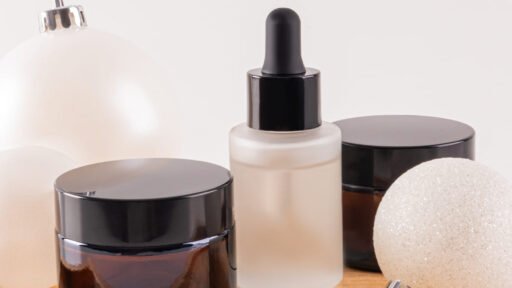As we look ahead to 2025, the world of skincare is poised for exciting innovation and transformation. From high-tech beauty devices powered by artificial intelligence to eco-conscious formulations that put sustainability first, the industry is rapidly evolving to meet the demands of savvy consumers.
1. Introduction: The Evolving World of Skincare
The skincare landscape is constantly evolving, shaped by scientific advancements, shifting consumer values, and global trends. As we look ahead to 2025, the world of skincare promises to be more dynamic and innovative than ever before.
Today’s consumers are not only seeking effective results but are also more conscious about the ingredients, sustainability, and inclusivity of the products they use. From high-tech formulations to eco-friendly packaging, the industry is responding with fresh ideas that cater to a wide range of needs and preferences.
2. Rise of Personalized Skincare Solutions
In 2025, expect to see a significant rise in skincare solutions tailored to individual needs. This is driven by advancements in technology and consumer demand for more effective results. Brands are now leveraging skin analysis tools, AI-driven quizzes, and even genetic testing to recommend products that match your unique skin type, concerns, and lifestyle.
Personalized skincare goes beyond simply labeling products for “dry” or “oily” skin. Instead, it considers a deeper range of factors including:
- Environmental exposure
- Stress levels
- Diet
- Hormonal changes—to create a regimen that truly works for you
Some companies are offering customized serums and creams, while others provide subscription boxes that adapt to your skin’s condition over time.
This shift not only enhances the user experience but also increases the likelihood of visible results, as consumers use products specifically formulated for their individual needs. As more people embrace the benefits of these tailored solutions, the demand for personalization in skincare will continue to reshape the industry in 2025 and beyond.
3. AI and Smart Beauty Devices
The skincare world is moving rapidly into the digital age, and 2025 is set to be a landmark year for AI-powered and smart beauty devices.
AI algorithms can now recommend the ideal products based on your unique skin type and current concerns, learning and adapting as your skin changes with the seasons or your lifestyle.
Leading brands are launching at-home devices that deliver professional-grade results, including microcurrent facial toning, LED light therapy, and more—all controlled and monitored through your smartphone.
As the technology continues to evolve, expect to see even smarter, more connected beauty tools hitting the market, making it easier than ever to achieve healthy, glowing skin with the help of artificial intelligence.
4. Sustainable and Eco-Friendly Packaging
Sustainability is no longer just a buzzword—it’s a movement that’s transforming the skincare industry from the inside out.
In 2025, expect to see even more brands embracing eco-friendly packaging solutions. Packaging made from recycled materials, biodegradable containers, and refillable systems are taking center stage.
Brands are getting creative with minimalist designs that use less plastic and more compostable or reusable components, such as glass jars, metal tins, and paper-based tubes.
Even product labels are being printed with soy-based inks and adhesives free of harmful chemicals. These innovations not only help reduce environmental impact but also appeal to eco-conscious shoppers who want their beauty routines to reflect their values.
As the shift toward green packaging gains momentum, brands that prioritize both aesthetics and sustainability are likely to stand out on the shelves—and in the minds of consumers—throughout 2025 and beyond.
5. Microbiome-Friendly Products
As our understanding of skin health deepens, the focus in 2025 is shifting toward products that support the skin’s natural microbiome.
The skin microbiome is a delicate ecosystem of beneficial bacteria and microorganisms that protect against irritants, lock in moisture, and keep skin looking its best. Disrupting this balance with harsh cleansers or over-exfoliating can lead to issues like sensitivity, dryness, or breakouts.
Microbiome-friendly skincare products are specially formulated to nurture rather than strip away these essential microbes. Expect to see more gentle cleansers, moisturizers, and serums that include prebiotics, probiotics, and postbiotics.
More brands will highlight “microbiome-safe” formulas, avoiding aggressive ingredients and leaning into soothing botanicals and barrier-supporting compounds.
6. Blue Light Protection Formulas
In 2025, expect to see a surge in products specifically formulated to shield your skin from the potential aging and pigmentation effects of blue light exposure.
These blue light protection formulas often contain antioxidants like lutein, niacinamide, and algae extracts, which help neutralize free radicals generated by digital screens.
Brands are also incorporating minerals and botanical blends that form a lightweight barrier on the skin. Blue light defense is becoming a standard part of daily skincare routines.
If you spend hours each day in front of screens, seeking out these innovative products can help support your skin’s resilience—giving you added peace of mind in our screen-centric world.
7. Advanced Sun Protection Innovations
Beyond just blocking UVA and UVB, the latest sunscreens are tackling blue light and pollution, with antioxidants and skin-repairing ingredients built right in.
Some formulas use encapsulated UV filters for longer-lasting protection, while others harness mineral and chemical blends optimized for sensitive skin.
As environmental awareness grows, eco-friendly, reef-safe ingredients are front and center, giving sun lovers peace of mind for both their skin and the planet. In 2025, sun protection isn’t just a step in your skincare—it’s seamlessly woven throughout your day.
8. Skinimalism: Less is More
Skinimalism is poised to be one of 2025’s most influential skincare trends, embracing the idea that a simple, pared-down routine can be just as effective—if not more so—than a complicated regimen. The core philosophy behind skinimalism is quality over quantity: instead of layering multiple products, the focus shifts to using fewer, but more purposeful and versatile formulas.
Consumers are increasingly seeking out multi-tasking products, such as moisturizers with built-in SPF or cleansers that gently exfoliate while hydrating the skin. This trend is also about being mindful of the ingredients in your products and eliminating those that are unnecessary or potentially irritating.
Skinimalism also aligns with a broader movement toward sustainability, as fewer products mean less waste and less impact on the environment.
Ultimately, this trend encourages everyone to embrace their natural skin texture and celebrate real, healthy skin—making self-care feel more attainable and less overwhelming.
9. Growth of Vegan and Cruelty-Free Brands
The demand for vegan and cruelty-free skincare is set to reach new heights in 2025.
Shoppers are now looking beyond marketing buzzwords, carefully checking ingredient lists and brand values before making a purchase. This shift is driving both established labels and indie startups to reformulate products, swap out animal-derived components, and proudly display certifications from respected organizations like Leaping Bunny and Vegan Society.
So, expect to see plant-powered alternatives to common ingredients, such as squalane sourced from sugarcane instead of sharks, and botanical waxes replacing beeswax.
Brands are also investing in transparency, making it easy for consumers to trace a product’s entire supply chain. As vegan and cruelty-free options become more accessible and diverse, their appeal extends far beyond dedicated vegans.
10. Biotech Ingredients and Lab-Grown Actives
Biotech ingredients and lab-grown actives are poised to revolutionize skincare in 2025.
As consumer demand for ethical, sustainable, and highly effective products continues to rise, brands are turning to biotechnology to create innovative solutions.
Companies are no longer relying solely on natural harvesting or synthetic compounds. They are now harnessing the power of science to produce active ingredients including:
- Peptides
- Pyaluronic acid
- Antioxidants
Expect to see more skincare products proudly featuring ingredients like bio-fermented squalane, lab-cultured vitamin C, or even proteins inspired by marine life.
In 2025, using biotech skincare will not just be about “cutting-edge” technology. Keep an eye out for brands highlighting their biotech credentials and offering products that deliver real, science-backed results.
11. Holistic Skincare: Wellness from Within
Holistic skincare is set to take center stage in 2025. This trend goes beyond topical creams and serums. It will be emphasizing the connection between diet, lifestyle, stress management, and skin health.
Brands are beginning to offer products and routines that support inner wellness, such as supplements featuring adaptogens, probiotics, and superfoods aimed at nourishing the skin from within.
Consumers are looking for routines that help them unwind, reduce stress, and improve sleep, all of which can have a visible impact on the complexion.
As this trend continues to grow, expect to see skincare brands partnering with nutritionists, wellness coaches, and mental health experts. This would offer integrated solutions for both inner and outer beauty.
12. Inclusivity in Skincare: Products for All Skin Tones
Inclusivity also means featuring diverse faces in marketing campaigns and consulting dermatologists from various backgrounds in product development.
This shift not only ensures better results for customers but also builds trust and loyalty among an increasingly diverse consumer base.
In 2025, expect to see more brands prioritizing transparency about their testing and actively listening to feedback from people of all backgrounds.
13. At-Home Professional Treatments
What’s driving this trend is not just convenience, but also a growing desire for customization and control. People want to tailor treatments to their unique skin concerns and schedules.
Many new devices come with app integrations, allowing users to track progress, receive personalized recommendations, and even connect with professionals for virtual consultations.
Brands are also focusing on safety and ease of use, ensuring that even advanced treatments are user-friendly and gentle enough for regular use.
Whether you’re looking to target fine lines, boost collagen, or simply achieve a professional-grade glow, at-home treatments are set to be a game-changer in 2025.
14. Multi-Functional and Hybrid Products
The demand for multi-functional and hybrid skincare products is set to skyrocket in 2025.
Today’s consumers are looking for simplicity and efficiency in their routines, and brands are responding with clever formulations that deliver multiple benefits in a single step. Moisturizers that double as sunscreens, serums that offer both anti-aging and brightening effects, or tinted products that combine hydration, coverage, and SPF.
Additionally, they cater to the growing minimalist beauty movement, which values streamlined routines and conscious consumption.



